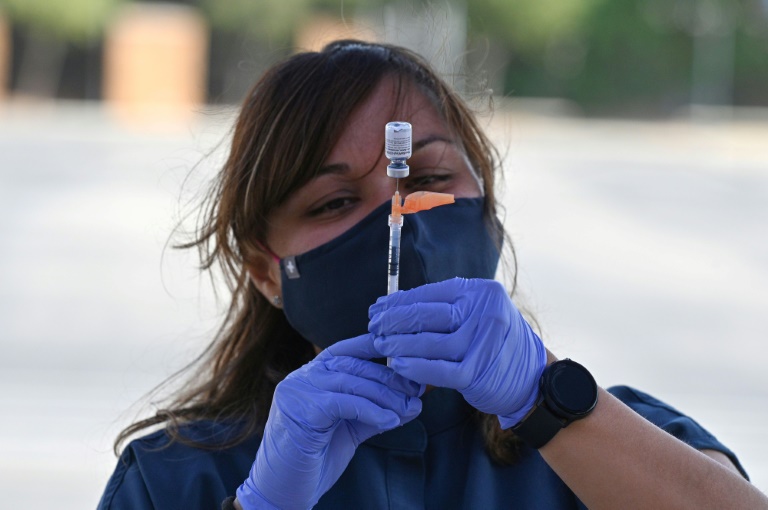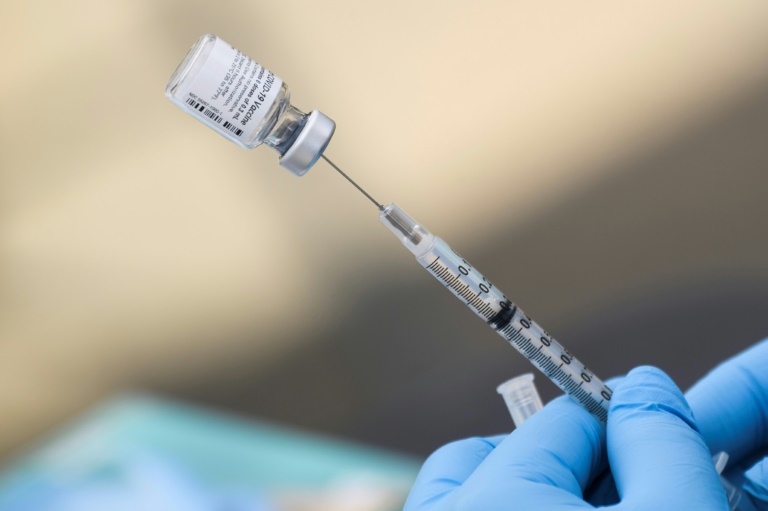Vaccine protection wanes within 6 months: phone app study
Protection from two doses of the Pfizer and AstraZeneca vaccines wanes within less than six months, according to a study of phone app data Wednesday, suggesting that booster shots may be needed to ensure prolonged coverage.
The latest finding comes as several countries are rolling out additional jabs for the fully vaccinated, a move slammed by the World Health Organization as millions in the world have yet to receive a single dose.
The Pfizer jab was 88 percent effective a month after the second dose, but protection fell to 74 percent after five to six months, according to the latest analysis of data from the Zoe Covid Study.
The study uses real-world data gathered via a mobile phone app with over a million active users, who log details on their vaccinations and test results, which is then analysed by researchers including scientists at King’s College London.
The study drew on more than 1.2 million test results and participants.
Protection from the AstraZeneca vaccine fell from 77 percent one month after a second dose to 67 percent after four to five months.
The lead scientist on the Zoe app, Professor Tim Spector, said that more data was needed on how vaccine effectiveness changes in different age groups.
UK cases grew sharply after social restrictions lifted in July but hospitalisations have been stable for the last month.
But Spector, a professor of genetic epidemiology at King’s College London, warned that waning vaccine effectiveness among the most vulnerable could lead to more hospitalisations and deaths by winter.
“In my opinion, a reasonable worst-case scenario could see protection below 50 percent for the elderly and healthcare workers by winter,” he said.
If high levels of infection remain, fuelled by the more transmissible Delta variant and easing of restrictions, “this scenario could mean increased hospitalisations and deaths”, the scientist said.
“We urgently need to make plans for vaccine boosters,” Spector added.
He also said the UK needed to decide whether its current focus on vaccinating children was “sensible if our aim is to reduce deaths and hospital admissions”.
The latest findings come after another study by University of Oxford scientists published last week found that the effectiveness of the Pfizer vaccine declines faster than that of AstraZeneca.
The UK began vaccinating older or clinically vulnerable people in December last year, so these make up most of the people who have been fully vaccinated for half a year and are now likely to be at increased risk of infection.









